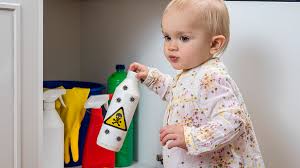 Non-communicable diseases are the principle causes of illness and death in children today.
Non-communicable diseases are the principle causes of illness and death in children today.
Research suggests non-communicable diseases in children is related to manufactured synthetic chemicals.
Toxic chemicals can produce a dose related spectrum of injury in children; brain injury with IQ loss in children exposed to low levels of lead is an example.
Diseases caused by toxic chemical exposures in childhood can lead to massive healthcare,expenditures, economic losses, lifelong productivity losses due to reduced cognition, physical disabilities, and premature death.
Diseases associated with early life exposures can manifest any time during the lifespan.
Anatomical birth defects are obvious at or near birth, but other toxic effects don’t become evident until later in childhood, adolescence or adulthood.
Delayed effects include altered, sexual development, reduced fertility, increased risks of asthma, obesity, diabetes, cardiovascular disease, neurologic, impairment, and cancer.
Manufactured chemicals, chemical mixtures, and plastics are presently approximately 350,000 in number today.
Most of these chemicals are produced from fossil fuels – gas, oil, and coal.
Manufactured chemicals are currently increasing about 3% per year and projected to triple by 2050.
Production of these chemicals has expanded 50 fold since 1950.
Unlike drugs, synthetic chemicals, have little prior assessment of their hazard and almost no post marketing surveillance for adverse health effects.
Fewer than 20% have been tested for toxicity and fewer still for toxic effects in infants and children.
Non-communicable diseases in children have risen sharply, increased by 30% over the last past half century.
Neurodevelopmental disorders now affects one and six children and autism spectrum disorder is diagnosed in 1 and 36.
The prevalence of pediatric asthma has tripled.
Pediatric obesity is nearly quadrupled in prevalence, and has increased the incidence of type two diabetes among children and adolescents.
Examples of non-computable diseases in childhood related to synthetic chemicals include the development of phocomelia after pregnant mothers ingested thalidomide, infants, with neurological impairment related to consumption of fish polluted with methylmercury, and cases of adenocarcinoma of the vagina whose mothers had taken diethylstilbestrol to prevent miscarriage.
Studies reveal prenatal exposures to phthalates and disorders of male productive development, between early life exposure to dichloraphenyltrichlorethane and breast cancer in women, between in utero exposures to brominated, flame retardants, phthalates and organophosphates, and lifelong decreases in cognitive function, and early life exposures to perfluoroalkyl, alcohol and polyfluoroalkyl substances, and immune dysfunction, dyslipidemia, and thyroid disorders.
Widespread childhood exposure to toxic chemicals, can damage the health, economic, liability, and security of an entire society as demonstrated by exposure to tetraethyl lead that was added to gasoline from 1950’s-1970’s: the average IQ among US children reduced by an estimated 2 to 5 points, the number of children with IQ above 130 decreased by more than 50%, and the number with an IQ below 70 increased by more than 50%.
In the decade after lead was removed from gasoline in the US, children’s mean blood lead level fell more than 95% and the mean IQ increased over time 2 to 5 points.
